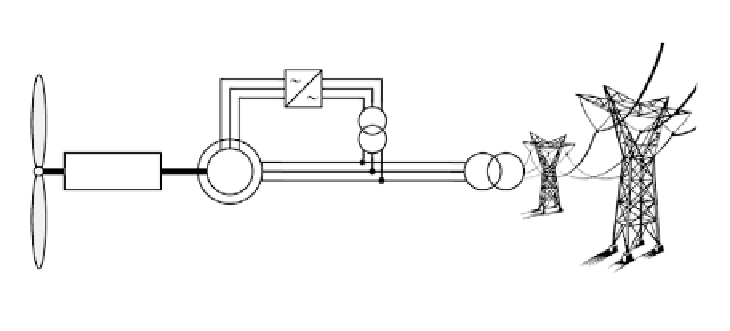Environmental Engineering Reference
In-Depth Information
Direct converter
Rotor
Gearbox
ASG
Transformer
Generator
Grid
Figure 5.41
Double-fed Asynchronous Generator with Direct Converter
The double-fed asynchronous generator can be operated both
oversynchronously and subsynchronously. In other words, rotor speeds below
the synchronous mains frequency are possible. Hence, the reactive power
demand of the generator can be controlled. Disadvantages of this system are
mains pollution and higher costs. Because of the possibility of the change in
speed and the controllable reactive power demand, this system has nearly the
same advantages as a gearless synchronous generator with converter, so that it
is increasingly being used.
M
AINS
O
PERATION
Annual energy gain
Before installing a wind generator, an annual performance calculation must be
performed. Therefore, the annual system output must be calculated. On-site
measurements of the wind speed usually provide the annual wind speed
distribution. For large wind generators or for wind farms, several wind surveys
are often made. With the manufacturer's figures for the dependence of the
power
P
(
v
) on the wind speed
v
(see also Figure 5.13) and the wind speed
distribution
f
(
v
), the average annual power
P
_
becomes:
(5.114)
The Weibull or Rayleigh distributions, covered in the previous section on wind
speed distributions, are often used to describe the wind speed distribution. If
on-site measurements are available, relative frequency distributions
h
(
v
) with
different wind speed intervals
i
as shown in Figure 5.1 are given. Hence, using
the average wind generator power
P
(
v
i
) of the respective interval
i
, the annual
average power becomes:
(5.115)



